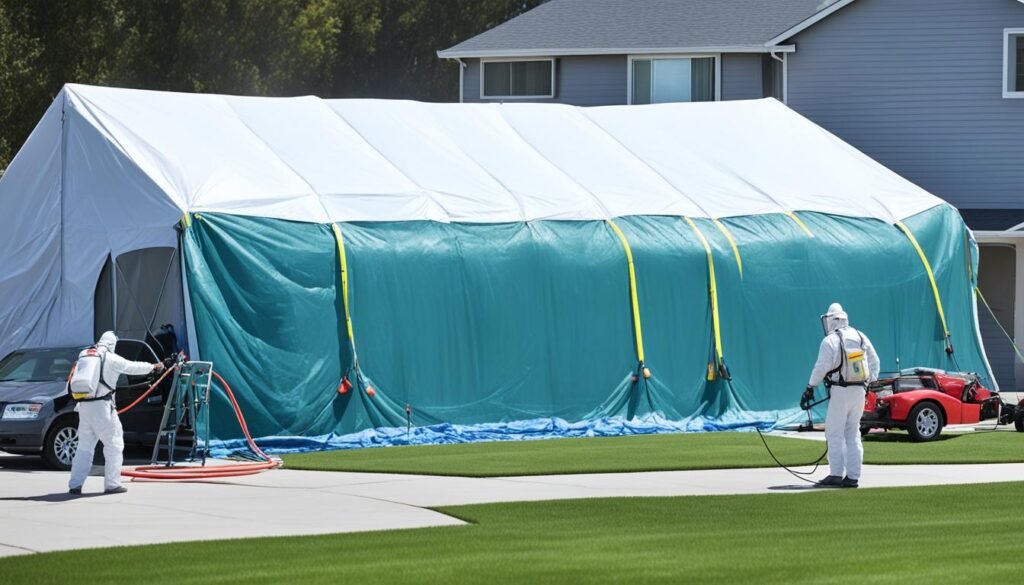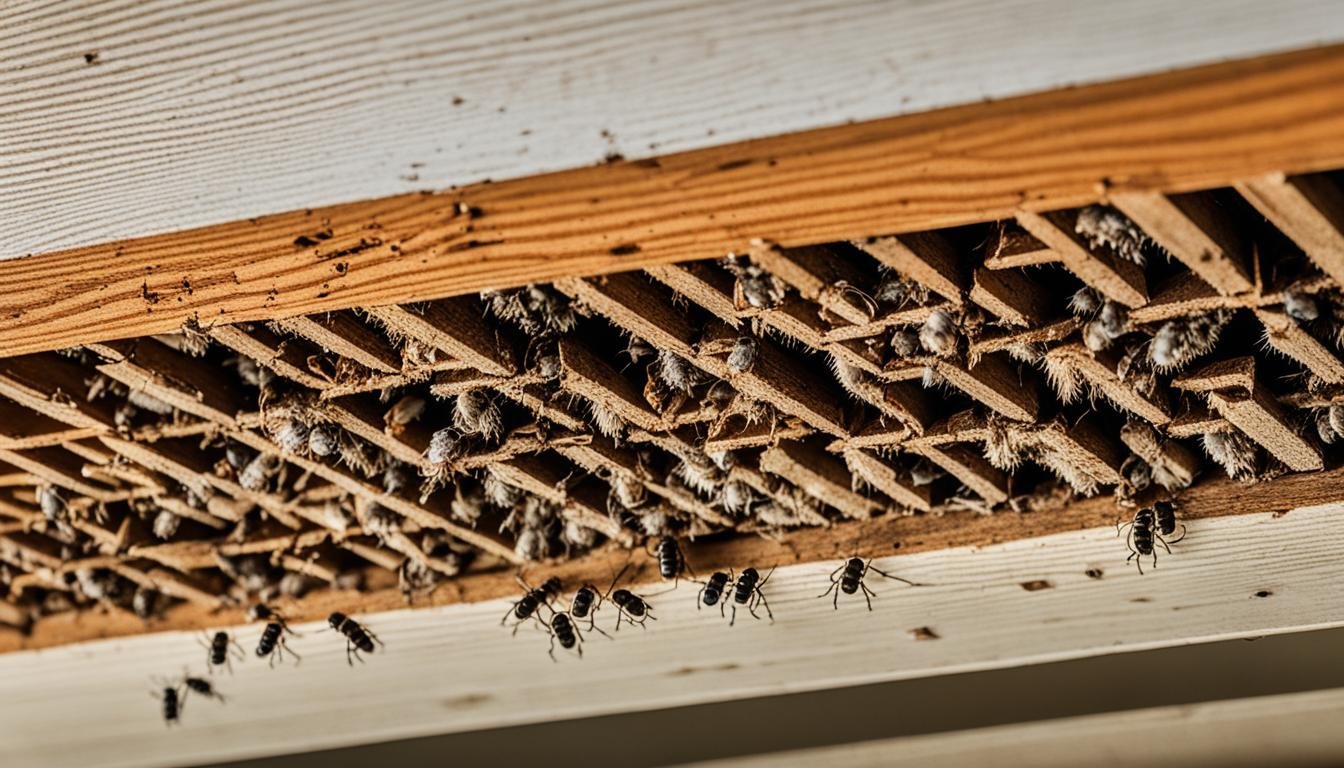Did you know that termite damage costs homeowners in the United States an estimated $5 billion annually? These tiny pests can wreak havoc on your property, causing structural damage that can be both costly and dangerous. If you’re facing a severe, widespread, and difficult-to-locate termite infestation, fumigation could be the most effective solution to eradicate them.
Key Takeaways:
- Fumigation is a highly effective method for controlling severe, widespread, and difficult-to-locate termite infestations.
- Termites live inside the wood, making soil treatments ineffective against them.
- Fumigation involves placing a tent over the home and releasing a fumigant that reaches cracks and crevices where termites hide.
- The fumigant depletes termites’ oxygen, affects their nervous system, and causes their death.
- Termite fumigation does not leave permanent residues and does not provide long-term protection against future infestations.
How Termite Tenting Works
Termite tenting, also known as structural fumigation, is a common method used to eliminate not only termites but also other pests. It involves erecting a large tent over the home or structure and flooding the space with pesticides in the form of gases. These gases can penetrate almost every crevice in the building, effectively killing the termites.
The main fumigant used in termite tenting is sulfuryl fluoride, which is a colorless and odorless gas. It is highly effective in eradicating drywood termites, providing a comprehensive solution for large-scale pest control. The fumigation process requires extensive preparation, including removing food items, plants, and pets from the property to ensure their safety during the treatment process.
Once the tenting process begins, the fumigant is introduced into the space, filling all areas within the structure. The fumigant works by depleting the oxygen levels, affecting the nervous system of termites, and ultimately leading to their eradication. The duration of the tenting process varies depending on the size of the property and the level of infestation, but it typically ranges from 24 to 72 hours.
After the fumigation process, it is crucial to ensure that there is no residue left in the house that could pose a health risk to the occupants. This is where a fumigant clearance device comes into play. The fumigation company will use this device to measure the levels of the fumigant and ensure that the property is safe to re-enter.
The fumigant clearance device is a crucial step in the overall fumigation process, as it provides confirmation that the fumigant has dissipated and the home is ready for occupancy. It guarantees the well-being of the residents and ensures that the fumigation process has been successful in the eradication of drywood termites.
Overall, termite tenting is a highly effective method for termite eradication, providing a comprehensive solution for large-scale pest control. It utilizes sulfuryl fluoride as the main fumigant and requires thorough preparation and clearance to ensure the safety of the occupants. By implementing termite tenting, homeowners can effectively eliminate drywood termites and protect their properties from further infestations.

Important Facts About Termite Tenting
When it comes to effective termite control, termite tenting offers two common methods: termite fumigation and termite heat treatment. However, both methods require proper safety precautions and should be handled by licensed pest control experts. DIY termite tenting is not recommended due to the potential dangers involved.
Termite fumigation, the more widely used method, involves extensive preparation to ensure its effectiveness. This includes storing food items in airtight containers and removing plants and pets from the property. Keep in mind that termite fumigation is specifically designed for drywood termites, as subterranean termites live below the ground.
The main fumigant used in termite tenting is sulfuryl fluoride, which is a restricted-use pesticide. This powerful solution circulates through the tented structure, penetrating cracks and crevices to eliminate termites. However, it’s important to be aware that termite tenting’s success relies on good weather conditions. Tarps are used to cover the property, and any leakage can occur during heavy rainfall or strong winds.
While termite tenting effectively controls active termite colonies, it does not provide long-term protection against future infestations. To prevent future termite problems, regular termite prevention measures should be taken, such as sealing cracks in the structure and conducting routine maintenance to minimize termite-friendly conditions.


